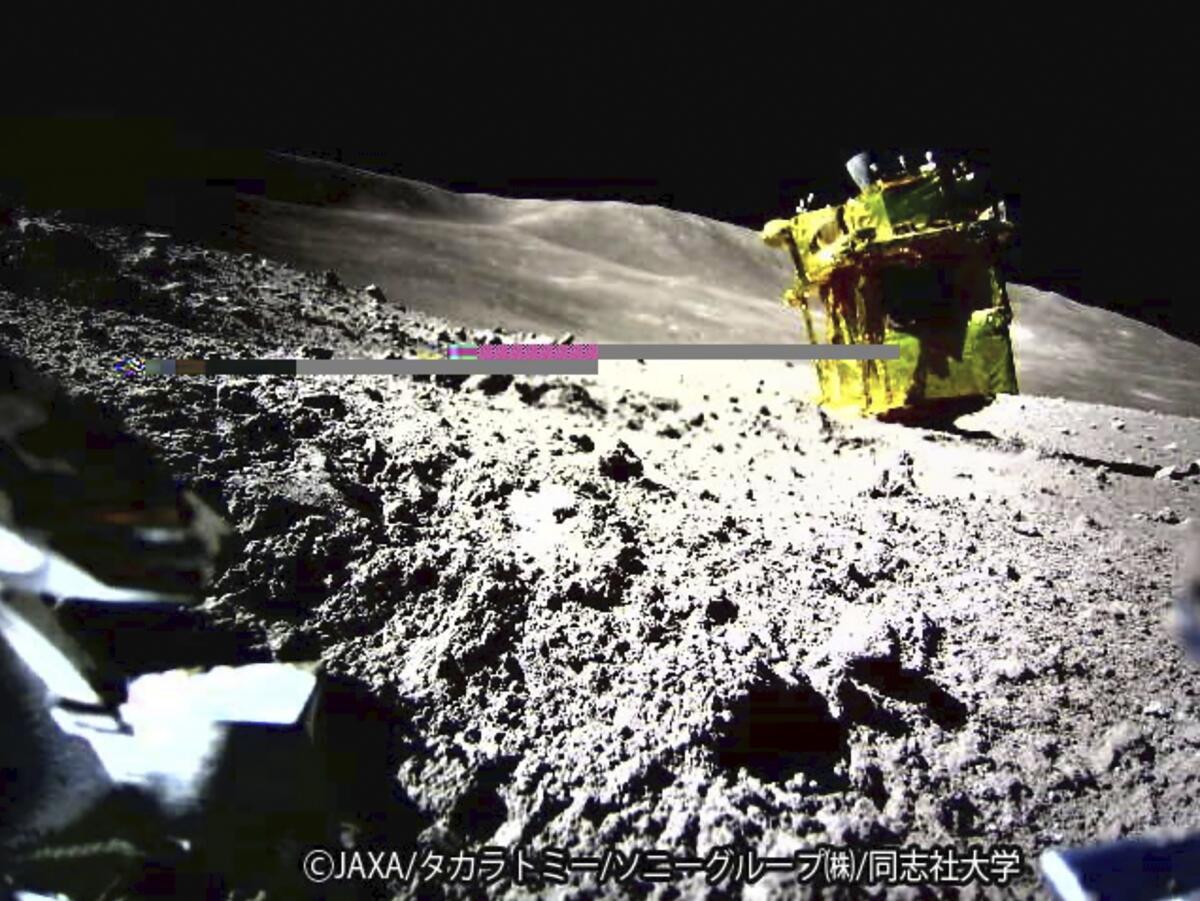Japan’s moon lander hit its pinpoint target but appears to be upside down

- Share via
TOKYO — Japan’s space agency said Thursday that its first lunar mission hit the tiny patch of the moon’s surface it was aiming for, in a successful demonstration of its pinpoint landing system — although the probe appears to be lying upside down.
Japan became the fifth country in history to reach the moon when the Smart Lander for Investigating Moon, or SLIM, touched down early Saturday. But trouble with the probe’s solar batteries made it hard at first to figure whether the probe landed in the target zone.
While most previous probes have used landing zones about six miles wide, SLIM was aiming at a target of just 330 feet.
Improved accuracy would give scientists access to more of the moon, since probes could be placed nearer to objects of study.
One of the lander’s main engines lost thrust about 54 yards above the moon surface, causing a harder landing than planned.
A pair of autonomous probes released by SLIM before touchdown sent back images of the box-shaped vehicle on the surface, although it appeared to be upside down.
After a few days of data analysis, the Japan Aerospace Exploration Agency, or JAXA, determined that the spacecraft landed about 60 yards away from its target, in between two craters near the Shioli crater, a region covered in volcanic rock.
But after the landing mishap, the craft’s solar panels wound up facing the wrong direction, and it cannot generate power. Officials said there is still hope the probe will be able to recharge when the moon enters its “daytime” in the coming days.
JAXA project manager Shinichiro Sakai said the images were just like those he’d imagined and seen in computer renderings.
“Something we designed traveled all the way to the moon and took that snapshot. I almost fell down when I saw it,” he said. For the pinpoint landing, Sakai said, he would give SLIM a “perfect score.”
“We demonstrated that we can land where we want,” Sakai said. “We opened a door to a new era.”
LEV-1, a hopping robot equipped with an antenna and a camera, was tasked with recording SLIM’s landing and transmitting images to Earth. LEV-2 is a baseball-sized rover equipped with two cameras, developed by JAXA with Sony, toy maker Tomy Co. and Doshisha University.
The two autonomous probes frame and select images independently, both using LEV-1’s antenna to send them to base.
Japan follows the United States, the Soviet Union, China and India in reaching the moon surface.
The project was the fruit of two decades of work on precision technology by JAXA.
JAXA has a track record with difficult landings. Its Hayabusa2 spacecraft, launched in 2014, touched down twice on the 3,000-foot-long asteroid Ryugu, collecting samples that were returned to Earth.
SLIM, nicknamed “the Moon Sniper,” was intended to seek clues about the origin of the moon, including analyzing minerals with a special camera.
SLIM was launched on a Mitsubishi Heavy H2A rocket in September. It initially orbited Earth and entered lunar orbit on Dec. 25.
Japan hopes to rebuild confidence toward its space technology after a number of failures.
A spacecraft designed by a Japanese company crashed during a lunar landing attempt in April, and a new flagship rocket failed its debut launch in March.
More to Read
Sign up for Essential California
The most important California stories and recommendations in your inbox every morning.
You may occasionally receive promotional content from the Los Angeles Times.













